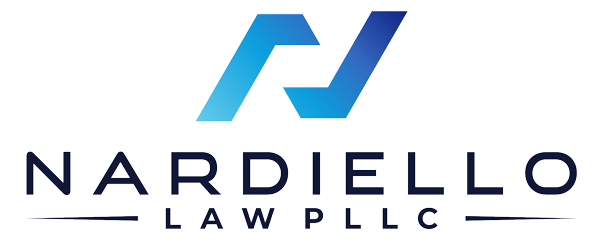Mostly everyone is familiar with New Year resolutions for their personal lives, but now is the time to start considering what resolutions to make for your business in 2022, especially when it comes to intellectual property and trademarks.
5 Trademark Resolutions to Empower Businesses in 2022

- Get serious about trademark enforcement.
In the U.S., if you fail to adequately “police” your trademark, you can lose it, even if you have a trademark registration. If other businesses begin using trademarks that are identical to or even somewhat like yours, you risk having your mark become “diluted,” which renders it weak and unable to distinguish your company as the source of certain products. A “diluted” trademark may just sound like an abstract concept – but it has real-world consequences: A competitor can use the fact that your trademark is too diluted to be enforced any longer and potentially convince a court of this. If that happens, you have basically lost your trademark because you can no longer stop others from using it.To avoid this nightmare, address potential infringement soon and often. Problems are usually addressed by sending “cease and desist” letters that outline the reasons for the perceived infringement and stating that it is expected that the use of the trademark will be stopped. A lawyer can help your company draft its letter carefully. Sending an inappropriate cease and desist letter can result in a legal backlash, so discuss all the facts with your attorney before acting. - Register your trademarks.
The need for companies to register their trademarks cannot be overstated. While U.S. laws recognize rights in trademarks that are not registered, asserting those rights without a trademark registration can be, at times, a nightmare. It is difficult to convince a competitor (or freeloader) to stop using their trademark that is too close to yours if all you have to rely on is your past use of the mark. Obtaining a registered U.S. trademark gives certain rights and benefits that can help block others from using similar or identical trademarks. Specifically, some of the rights that trademark registrations provide are:- The right to bring a lawsuit in federal court for the infringement of a registered trademark.
- The right to recover attorneys’ fees in certain cases.
- The right to triple the dollar amount of damages you sustained, in certain cases.
- The ability to block trademark applications that are identical to or similar to your trademark.
- A “priority” right that prevents others from using a similar mark outside of your geographic area, even though you may not yet be selling in that geographic area.
- The right to recover attorneys’ fees in certain cases.
- The right to triple the dollar amount of damages you sustained, in certain cases.
- The ability to block trademark applications that are identical to or similar to your trademark.A “priority” right that prevents others from using a similar mark outside of your geographic area, even though you may not yet be selling in that geographic area.
- Review your current trademark registrations to see if you need to expand your rights.
There are two ways you can expand your registered rights:
First, you might want to file new applications for the same mark but for different goods or services. When your business obtained its trademark registrations, the applications listed the discrete goods and services, known as the “Identification.” The Trademark Office requires a good deal of specificity, so for example, one cannot simply get a trademark registration for “clothing.” Instead, the types of clothing need to be specified.
If the company has now expanded its offerings, you should determine with your attorney whether you should file additional trademark applications to cover your current products or services. The need to do this depends on how related the goods and services in the registration are related to your current offerings. However, your attorney will know what is close enough.Second, the company may have expanded its sales outside of the US. This is the time to seriously consider getting trademark protection abroad. It is not possible to get one registration that covers all countries, but there are some regional applications that can be filed (like for the European Union), which makes it easy to get rights in multiple countries at once.In some countries, the date you obtain the registration can be even more important than in the U.S., since certain countries may not recognize “unregistered rights” as we do here. If you are interested in getting trademark protection abroad, work with your attorney who can help you assess in which countries it makes the most sense to file. Since budgets are not limitless, you should weigh the need for protection against cost. The need for protection is usually based on where you are doing business (or where it is anticipated), as well as the level of counterfeiting in particular countries. - Review your current registrations to make sure they accurately reflect your current offerings. Your registrations could be at risk.
When your business obtained its trademark registrations, the applications listed the discrete goods and services, known as the “Identification.” The Trademark Office requires a good deal of specificity, so for example, one cannot simply get a trademark registration for “clothing.” Instead, the particular types of clothing need to be specified. However, the Trademark Office requires that you update your goods & services identification when it comes time to file the trademark maintenance documents (after the 5th year of registration and then every 10 years from the date of registration).If you fail to do this properly and hold onto the registration for goods or services you are no longer offering, the registration could be canceled by a competitor who would allege that you tried to keep the registration for certain goods/services even though you knew that you were not selling them anymore. To avoid this problem, take an inventory of which goods or services you are currently selling and work with your attorney to properly draft the new identification of goods when it comes time to file your registration maintenance documents. - Run trademark searches for trademarks that are similar to yours for related goods or services.
You would be surprised about the number of applications that are filed for trademarks that are similar to existing registered marks for related goods or services. While most companies are aware of their competitors’ use of new trademarks, many applications are filed on an “intent-to-use” basis, so it’s possible that competitors are not yet using marks but have taken steps behind the scenes to formalize their rights without you knowing.Conducting a substantive trademark search through a trademark attorney can help get control over a budding infringement problem before it gets out of control. And doing simple searches through Google or even on the USPTO website is not enough – there are additional databases available to trademark attorneys that can search not only the USPTO but also state trademark databases and even applications in foreign countries as well. Further, trademark attorneys know when a mark is too close or not close enough to cause a problem. It is not necessarily as intuitive as it appears.
If you have any questions, feel free to reach out to Jason at [email protected]. Or you can reach him at 212-899-5299.

